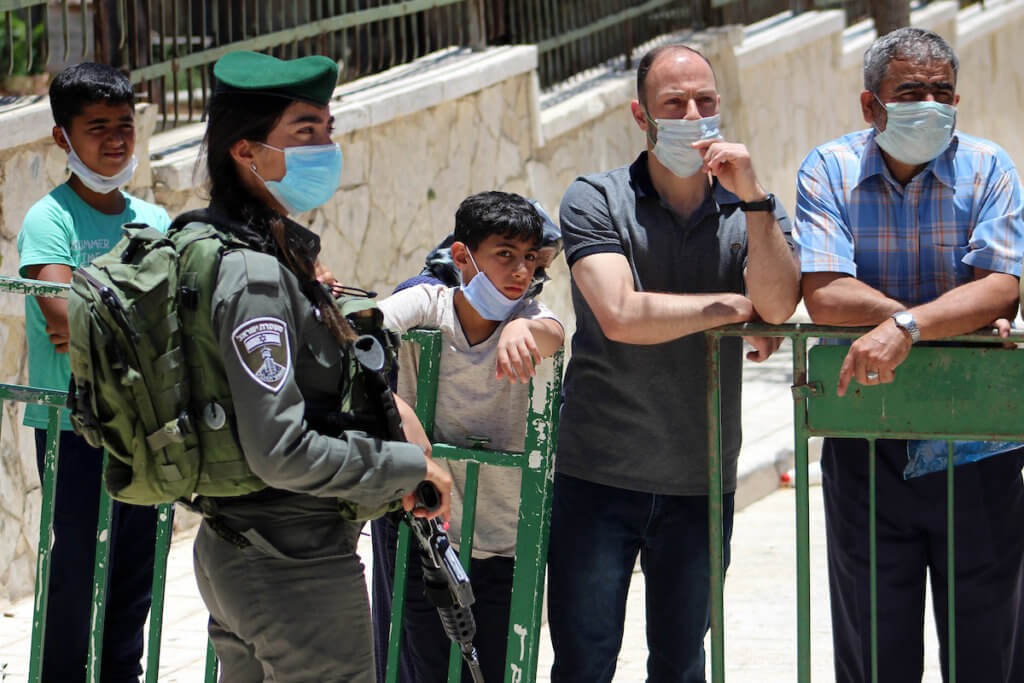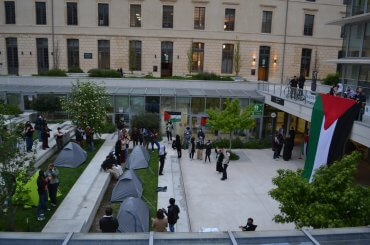Palestine reached a terrifying milestone over the weekend: as of July 4th, all 350 artificial respirators available in the occupied Palestinian territories were officially occupied, both by COVID-19 patients, and patients with chronic illnesses, according to the Palestinian Ministry of Health.
Leaders are struggling to maintain control over the virus, as the number of cases soared past 5,000 cases.
According to the Palestinian Ministry of Health, as of July 7th there were at least 5,092 cases of the virus in the occupied West Bank, East Jerusalem, and the Gaza Strip. Of the 5,092, only 668 patients were in recovery.
Of the overall total cases in Palestine, 4,575 are in the West Bank, 72 in the Gaza Strip, and 445 in occupied East Jerusalem.
The daily rate of infection continues to rise, with more than 300 cases reported in the past 24 hours alone. Over the weekend, there were more than 500 cases reported in a single day.
The Hebron district, the largest in the West Bank, remains the epicenter of the outbreak with more than 70% of cases reported there. Yesterday, of the 306 new cases reported, 278 were in the Hebron district.
At least one newborn baby in the Hebron district was reportedly diagnosed with the virus upon birth, and was immediately quarantined with their mother.
Health Minister Mai al-Kaila warned that the situation in Hebron was “spiraling out of control” and urged residents of the district to adhere to social distancing orders and comply with home quarantine orders.
The entire West Bank was put under a five-day lock down starting on Friday, July 3rd. It was the first time in weeks that the Palestinian Authority (PA) enforced a nation-wide lock down, following several smaller-scale shut downs ordered by each governorate over its respective residents.
Police checkpoints within and between cities in the West Bank were re-erected for the first time in weeks, and all non-essential businesses were shut down.
But as the current lock down came closer to ending on Tuesday evening, reports of an extension on the lock down began to surface as fears grew over the virus and its rapid spread across the territory.
Since this second wave of the virus began in mid-June, the PA has had a difficult time getting things under control.
The choice between shutting down the country in order to control the virus, or keep the economy open in order to keep civilians financially afloat, has proved to be quite the challenge for Palestinian leadership.
With the economy still reeling from the first two-month lock down that began in March, the government has refrained from enforcing extended lock downs for fear of the social uproar that might result from the prospect of more economic turmoil.
The current political situation facing the government has only added to their inability to curb the spread of the virus, particularly in rural towns and villages that are in Areas B and C, where the PA no longer has a police presence due to ending security coordination with Israel over annexation.
The government’s weakened presence in such areas, coupled with the unhindered continuation of weddings, graduation parties, and other large gatherings, has only made the situation worse.
Despite the climbing death toll, which has now reached 22 people, there still exists a widely held belief that the virus is not as dangerous as it is made out to be.
A history of widespread corruption within the PA has contributed to the belief that the government is exaggerating the severity of the crisis, and is exploiting the situation in order to receive more international aid, that is in turn being used to line the pockets of the elite ruling class.
This is exacerbated by the fact that the majority of the population have not received any form of government aid since the crisis began back in March.
An unfortunate consequence of this belief is the refusal of a large sector of the population to take the situation seriously, particularly among young people, who as data suggests, are the main carriers of the virus in Palestine.
According to the Ministry of Health the main carriers of the virus in Palestine are between the ages of 20-29 years old (23.58% of total cases), followed closely behind people ages 10-19 (18.23%).
On top of that, the main source of infection has been traced to social gatherings, which account for nearly 67% of cases. While the government continues to threaten punishment against those ignoring social distancing orders, large gatherings, from birthday parties to funeral gatherings, have mostly continued without consequence over the past few weeks.
Back in March, a few dozen coronavirus cases in Bethlehem forced most of the West Bank into panic, and caused the city’s residents to vigilantly abide by lock down orders. This time around, however, cases in the hundreds and thousands won’t seem to stop people from living their lives anytime soon.



In Israel, too, we are experiencing an alarming surge in new cases:
Active cases: 14,516
fatalities: 344
PA: Active cases:4,516
fatalities: 19